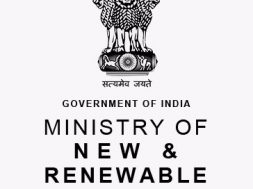
Earlier this month, Moody’s cut the country’s sovereign credit rating by a notch to the lowest investment grade with negative outlook
The recent downgrading of India’s sovereign credit rating poses increased risk for attracting global investors in the country’s renewable energy sector.
Earlier this month, Moody’s cut the country’s sovereign credit rating by a notch to the lowest investment grade with negative outlook. The country’s credit rating was revised down to Baa3 from Baa2. In April, both Moody’s and Fitch had warned that deterioration in India’s fiscal outlook as a result of lower growth could exert pressure on its sovereign rating.
“Foreign investors would now be shy of investing in India’s promising renewable energy generation sector, especially solar power. In last fiscal, we pocketed some major overseas funding from Abu Dhabi Investment Authority (ADIA), Orix and Temasek”, said a solar power developer.
In 2019-20, Indian renewable energy generation sealed investment deals valued at $8.4 billion, a report from US-based think tank Institute for Energy Economics & Financial Analysis (IEEFA) said, quoting figures collated by JMK Research.
Over 63 per cent included capital investment by five renewable energy companies – Greenko Energy Holdings, ReNew Power, Adani Green energy, Infrastructure Leasing & Financial Services (IL&FS), and Sterling and Wilson – while 46 per cent was contributed by five investors: General Insurance Corporation (GIC) and Abu Dhabi Investment Authority (ADIA), Orix, Temasek, Total and Shapoorji Pallonji, and Khurshed Daruvala .
While Greenko Energy Holdings has been the top renewable energy developer in India during 2019-20, GIC and ADIA have been the biggest investors, with all capital invested in Greenko Energy Holdings- 46 per cent in the form of equity ($824 million) and the remaining in green bonds ($950 million). Greenko has also raised another $350 million from JP Morgan and Deutsche Bank via green bonds.
EEFA feels that with the decreasing cost of debt and solar module prices, it is an opportune time for the Government of India to accelerate the energy transition through better regulation and policy definition in the power sector. The government needs to reduce off-taker risk by ensuring discoms (electricity distribution companies) both honour contracts and make payments to generators, it suggested.
“Finally, to attract more investment, the government needs to ensure policy certainty and explore innovative financial solutions in order to attract more funds. With the global appetite changing in favour of cheaper deflationary renewable energy technologies, and with over 130 and counting globally significant banks and financial institutions committing to divest their funds from the fossil fuel sector, it is time to make India an attractive investment opportunity, and in so doing, build a strong economy with sustainable energy choices”, said Vibhuti Garg, energy economist with IEEFA India.
“The government needs to undertake reforms and strengthen the supervision, regulation and capitalization of the financial sector to boost investor confidence”, Garg added.
The share of renewable energy capacity in the country’s power sector has been growing. In FY20, the sector accounted for two-thirds share in fresh capacity additions. The country installed 9.39 Gw of new on-grid renewable energy capacity in last fiscal in addition to 1.5 Gw of behind the meter rooftop solar in calendar 2019.
















